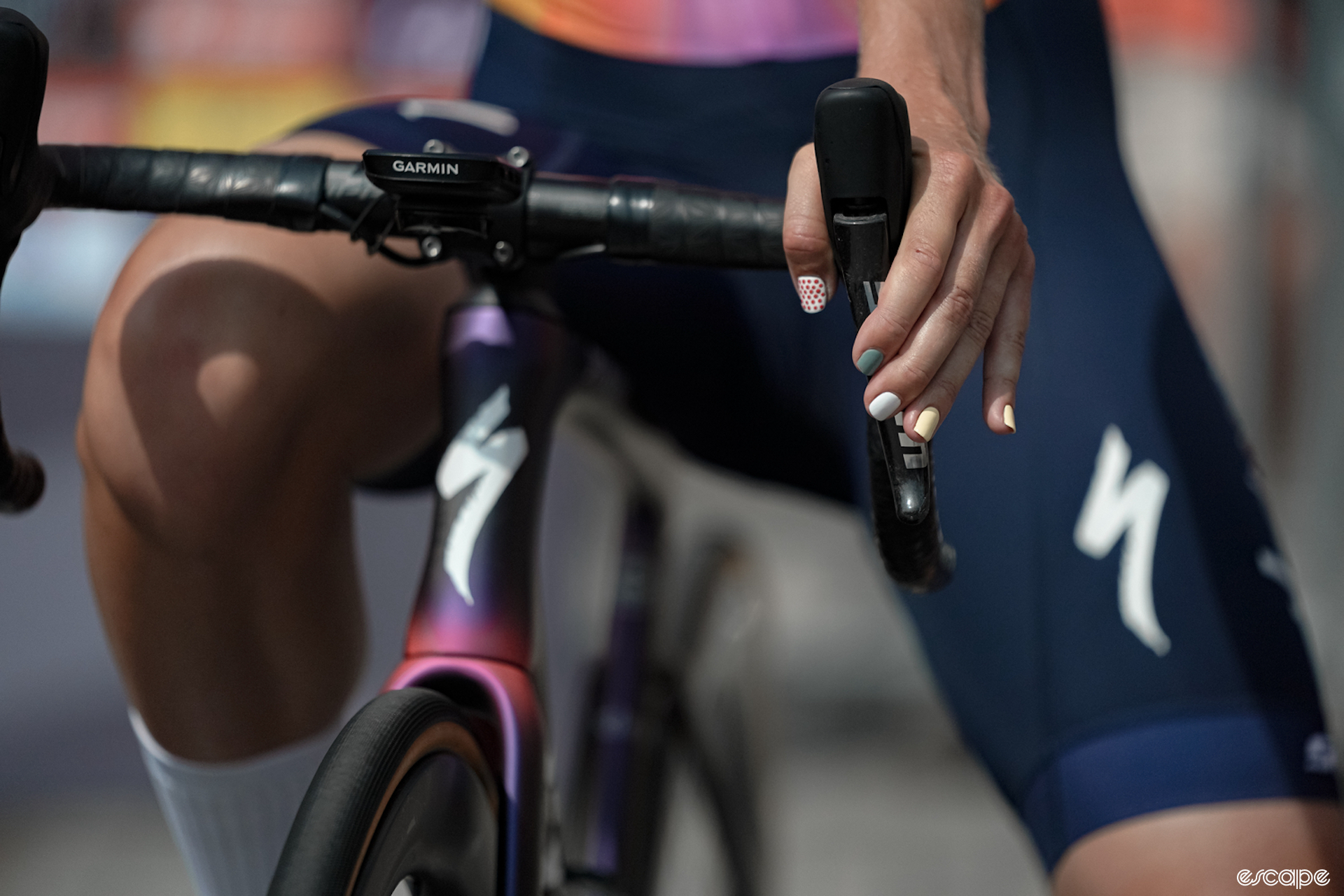Over a week after the women rolled out of Clermont-Ferrand for the first stage of the Tour de France Femmes avec Zwift, I can’t quite remember what the town even looks like. So much happened in the week after that flag dropped, so many historic wins and devastating losses.
From the go, it was clear that the second edition of the Tour de France Femmes would be different. There was static in the air, but the general feel was one of promise. It’s hard to overstate how much the women prepare for this event. In its second year, it’s already the biggest race on the calendar, and you can feel it whenever you talk to anyone attending the race. Staff, journalists, and riders – all of them – were thinking about this race for a year before the women’s peloton descended on the Auvergne-Rhône-Alpes of France.
Already this year there was a separation from the men’s Tour de France that elevated the race above what it was in 2022. The inaugural event was always going to be hard to top, from the racing to the coverage and everything in between. But the 2023 edition far exceeded anyone’s expectations.

Everyone’s biggest fear, a fear that was heightened when Lotte Kopecky rode away on the Côte de Durtol, was that SD Worx would dominate the week. And while they did win four of the eight stages, two jerseys, the team classification, and the overall, it was far from the SD Worx show people expected.
Each day a new rider and a new team rode into everyone’s hearts and minds. While the first stage was reserved for Kopecky, the second stage went to Liane Lippert and a discussion of Movistar’s tactics, the third to Julie de Wilde and the curious case of the chase behind her. Fenix-Deceuninck retaliated on the fourth stage to win with Yara Kastelijn, and when everyone expected a sprint stage on the fifth it was Ricarda Bauernfeind that took it.
Again on the sixth stage, the winner came from the break with Emma Norsgaard securing Movistar’s second win of the week. Even when Demi Vollering obliterated the Col du Tourmalet on the seventh stage Kasia Niewiadoma was all anyone wanted to talk about.
The first and final stages were the only two that truly went to SD Worx, with the Dutch team sweeping the podium on the final-stage ITT, but the absence of Annemiek van Vleuten on the final general classification podium was felt even as Vollering, Kopecky, and Niewiadoma celebrated their successes.
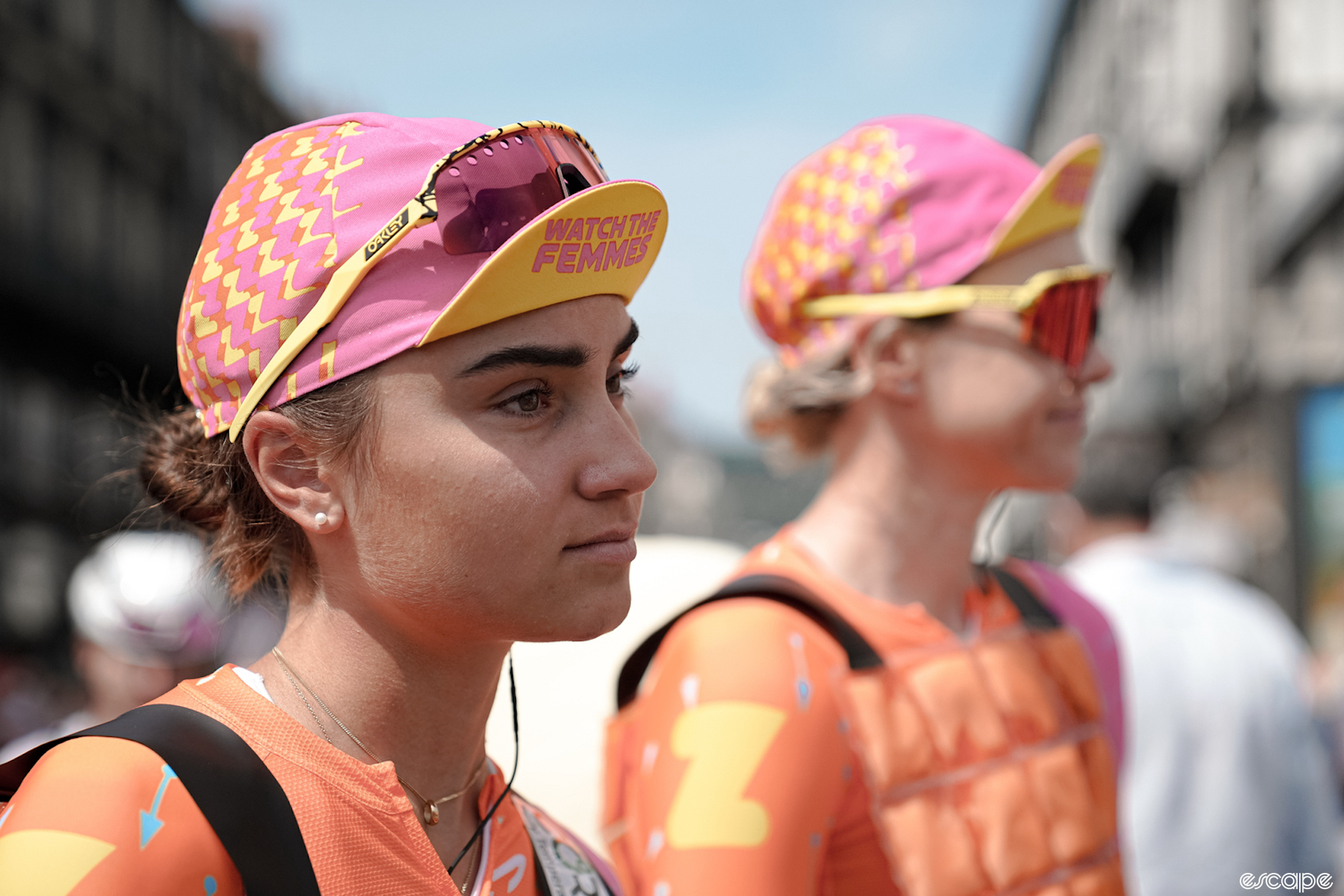
Every stage had countless stories to tell, another three-week race that happened just before the women started was completely forgotten, and we found that the hype that surrounded the Tour de France Femmes was warranted.
Not only in the crowds that came to every start, every finish, and lined the roads but also in the organization from both the ASO and from Zwift, whose presence couldn’t be ignored even if you don’t want to say the race’s full name. The virtual riding platform has so thoroughly tethered itself not only to the event but to the growth and development of women’s cycling as a whole, and while the investment is a financial one, you can feel in everything they do that they truly care about the women’s peloton.
Where the first edition leaned into the men’s historic three-week race, the second tried to stand alone. And with the third edition starting in Rotterdam, thanks in part to the Paris Olympic Games next summer, the women’s Tour de France Femmes will continue to inch away from the men’s race, forging its own path, and creating its own narrative.
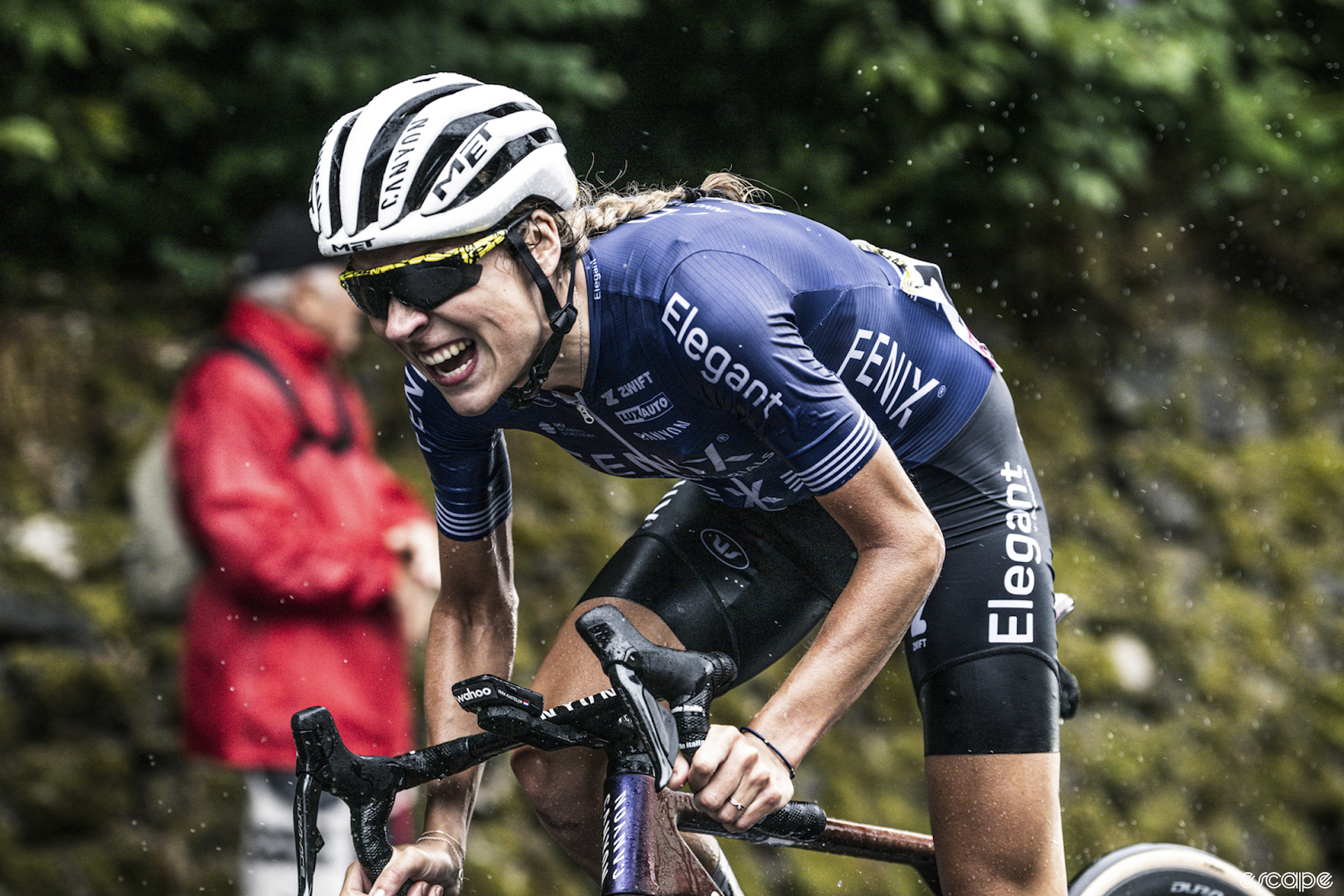
This is only the beginning of what is going to be a long and prosperous event on the women’s calendar. We’ve already seen the effect of it on women’s cycling – more and more people are digging into the characters that make up the sport. Four times more U18 women registered with Belgium’s Cycling Vlaanderen in the wake of Lotte Kopecky bursting onto the scene in 2020.
Walking around the race it was impossible to ignore the little girls pulling their parents every which way as riders rode to sign-on or tried to push their way back to the bus after the stages. Polka-dot T-shirts were everywhere, and more and more often bystanders would know the names of riders. Every time Audrey Cordon-Ragot stepped out of her Human Powered Health bus she was treated to a sea of admirers, and FDJ-Suez almost always had people lined three-deep behind the ropes waiting for a glimpse of Evita Muzic, Marta Cavalli, and Cecilie Uttrup Ludwig.
Cycling has always been a popular sport in Europe. Even when I was racing, men would show up to the Rally Cycling team bus with photos from my United Healthcare days asking for autographs, but the scene at the Tour de France Femmes is different. It’s not just people showing up because they got the day off work and decided to wander in to see what the fuss was about. It’s families travelling to the race so their sons and daughters can witness what the women of cycling have to offer the world. It’s parents who want their kids to look up to these women because they are worth looking up to.
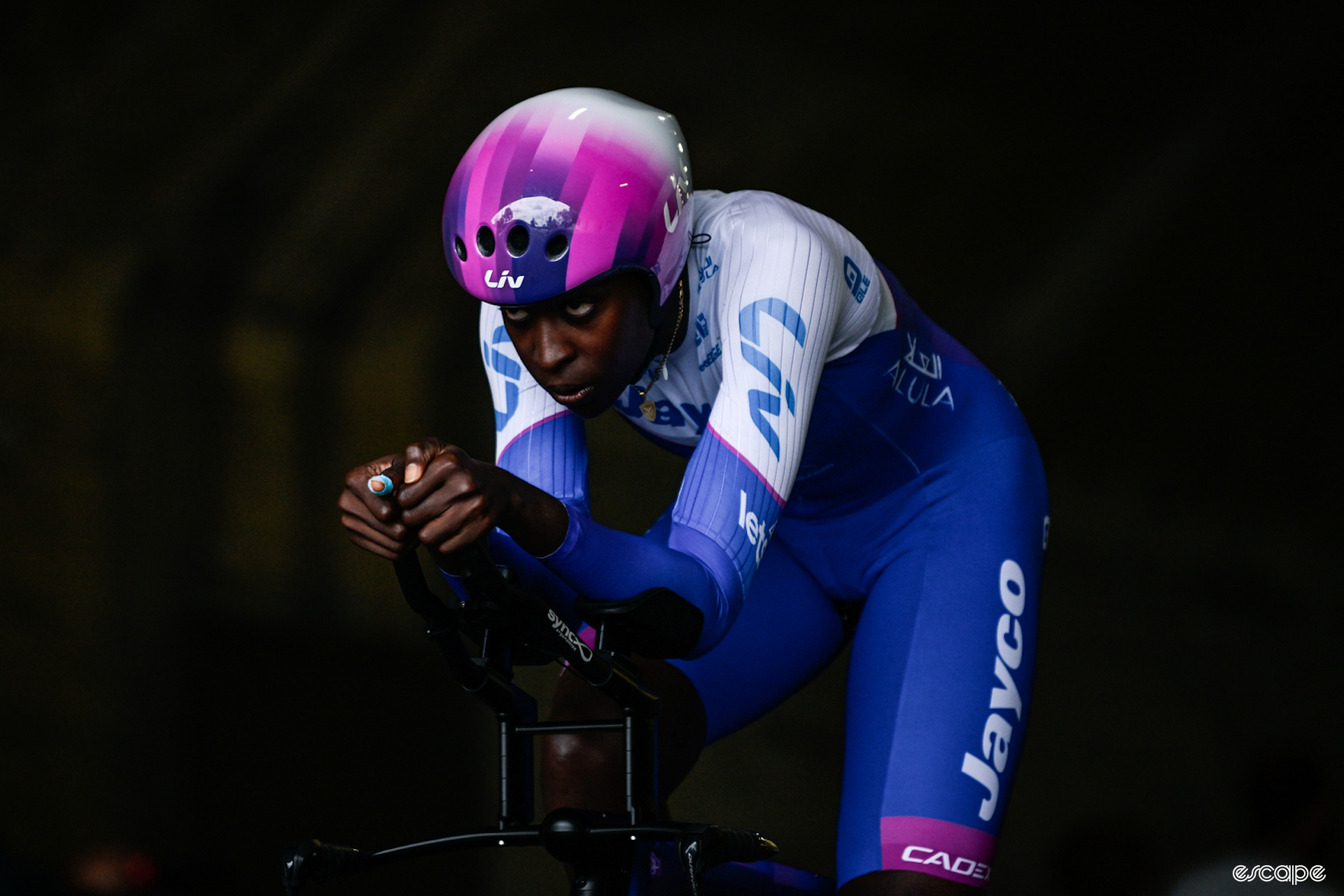
Even through the fog of the Col du Tourmalet, you could feel the excitement in the air. Excitement not only for the race that would pass through but also for the future of women’s sports.
We often talk about what women’s cycling lacks. A three-tier system to further development, lower tier races for non-UCI and non-WorldTour teams to enter, a lack of minimum wage for any riders not in the WorldTour – the list goes on. But for better or worse women’s cycling is miles ahead of other women’s sports, and we have an opportunity with a race so beloved worldwide to inspire other sports to invest in their women. The Tour de France Femmes effect will not only elevate women’s cycling, it has the potential to bring more women’s sports to the fore, worldwide.
As of Wednesday, three days after the Tour de France Femmes wrapped up in Pau, the UCI announced the addition of a ProTeam category to the women’s peloton in 2025. The plan originally had been to add the third tier in between the current WorldTour status and Continental tier in 2026 but due to the current “boom” in women’s cycling the governing body expedited their plans.
This new middle tier will offer a home to teams like Human Powered Health, Israel Premier Tech Roland, Lifeplus Wahoo, and Cofidis. Teams that have the means to support a professional team but don’t have the depth required to animate the top tier of women’s cycling. It is by no means a bad thing, the sport needs these teams to grow and to develop up-and-coming riders. These teams are essential to the future of the sport. A middle tier will help to strengthen the base of the sport. In 2023, with the Tour de France Femmes and the top WorldTour teams driving the sport forward, we’re looking at a very top-heavy structure.
Right now, in its second year, it’s clear this race is a success. In the years to come we will look back at the first two years of the Tour de France Femmes and be able to point to it and say this changed women’s sports, this race made a difference.
The dust has now settled on another Tour de France Femmes, and the women are now flocking to Scotland for the World Championships. But let us not forget the impact this can have on the future if we carry the momentum from such an incredible week of cycling into the other events still to come and into next season where the women will once again wow us with their athleticism, determination, and likability.
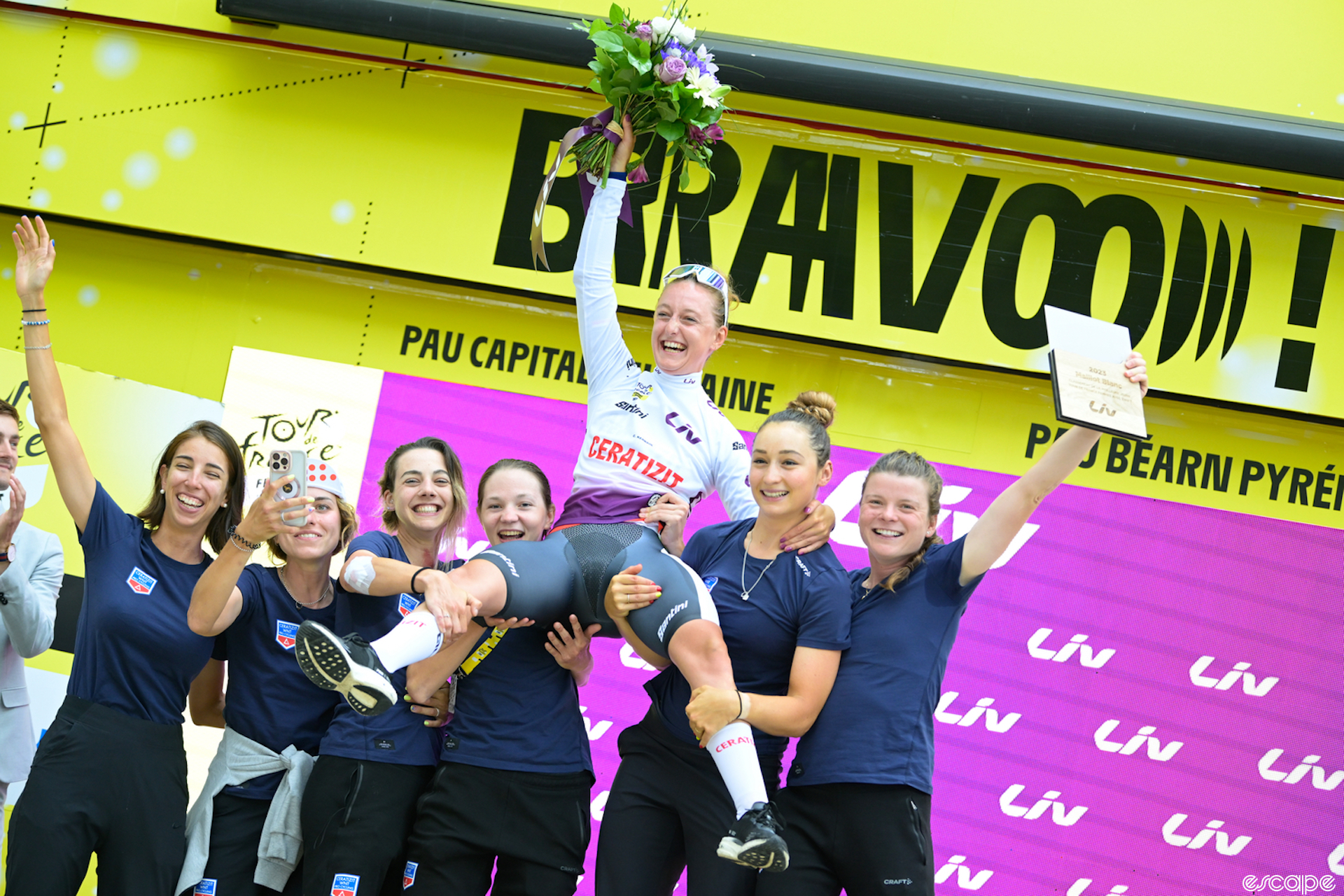
What did you think of this story?
